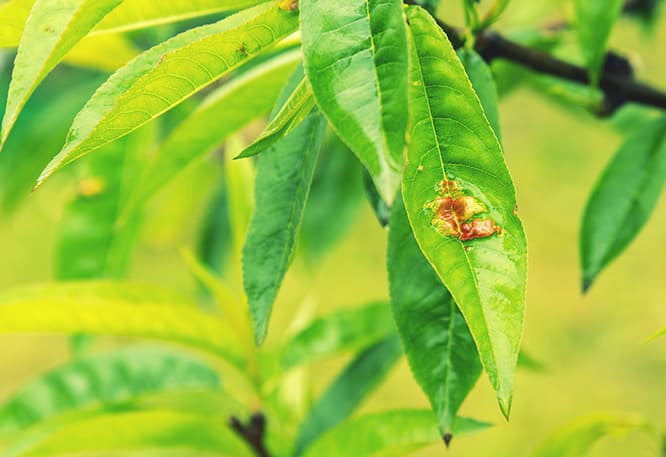No one wants a tree that is ugly, underperforms, and just stands there. We want trees that flower, change colors, offer shade, house animals, and maybe even provide fruit. We ask a lot of trees, and they don’t really ask for much in return. They want some trimming every now and again and some water and nutrients. Unfortunately, we tend to underperform when it comes to trees. Most homeowners just expect that the trees will find what they need by themselves. However, trees sometimes have trouble finding the water that they need.
In other cases, we tend to take too much care of our trees, overwatering them to the point that they are gorged on them. Neither situation is great. But how can you tell if your watering methods aren’t all that great? Here are a few of the most common signs of overwatering and underwatering:

1. Start Learning How to Water When Trees Are Young
- Young trees need your attention and devotion
- Pay attention at the nursery when someone tells you how to take care of the tree
- Underwatering young trees is better than overwatering
Getting a new tree is a bit like getting a new puppy – you want to shower it with attention and everything that it needs. However, just like a new puppy, your new tree is going through quite a bit and it really doesn’t like it when someone hovers around it and gives it too much water. According to The Arbor Doctor, some 95% of people will overwater their trees when they first get them. This might sound like a really high number, but it is true and something that you see all the time.
Luckily, young trees can stand up to overwatering, though it will take them some time to really prosper.
Still, you shouldn’t overwater younger trees. In fact, you should underwater them if anything. Talk to professionals about the right amount of water for your tree’s type, location, and even how it was watered before it came to you.
2. Learn How to Read Your Soil
- Feel the soil using your finger
- Go about two inches into the soil for the best reading
- Go shallow for younger trees and a little deeper for older ones
- Water gauges give more precise readings
The best way to really monitor your watering habits is to look into the soil around your trees. This soil can tell the entire story of your watering habits. If you water your trees too much, you will have a soupy, muddy mess similar to the mess in the picture to the side. If you don’t water your tree enough, you may see dry, dusty dirt on top of the soil. However, packed soil can make this reading difficult.
Instead of just using your eyes, use your fingers to reach down into the soil. At about two inches, you should be able to start feeling moisture. If you don't, it's time to water your trees. If you feel wetness or your finger drips when you look at it, there is too much water in your soil.
According to Hunker, the best way to really get a reading is to use a water gauge. This will give you an instant reading of dry, wet, or moist/damp. Just be careful about not piercing through the delicate roots of the tree.
3. At Least at First, Don't Use Drop Drip Irrigation
- You need to know how much you are watering your trees
- Drop drip irrigation isn't always reliable
- Can flood the ground, opening tree up for fungi
Home Guides has a great quote from the Las Pilitas Nursery, who specializes in trees, saying, “Drip irrigation causes many root problems including overwatering, especially for native trees.” However, because it is something easy and takes some pressure off of homeowners, it is still a popular method of tree care.
Drop drip irrigation is so easy, and most things that are too easy aren’t the right things to do. However, there is a time and place for it. If you have already sat and tested your tree and know just how much water to give it, drop drip irrigation can be a good thing. However, if you have a new tree and you don’t know how much water it needs just yet, don’t start with drop drip just yet.
Native trees, sensitive trees, sick trees, and old trees all need your specialized attention – attention you just can’t give if you are relying on something else to do the watering for you – something that cannot report back. You can eventually get to drop drip, but not to start and not in certain cases.
4. You Can Read Your Leaves
- If you are overwatering: leaves tend to be wilted
- If you are underwatering: leaves are a bit crispy
- Browning may start small, but will eventually spread
Teleflora has a great explanation that will tell you how to read your leaves. Just like people have been reading tea leaves for years, you can also read your tree leaves. Leaves that are crispy and crunchy (like you might find in autumn) tend to be on trees that haven’t been watered enough. You can break off the crispy parts of the leaves if you make this mistake.
If you are overwatering your trees, the leaves may be a bit gummy or wilted, though they will still be brown. This is a harder problem to solve, because these leaves may not fall off the tree.
Unfortunately, many people try to fix this problem by doing the exact opposite. Your best bet it so slowly shift toward the other extreme and see when your tree reacts positively. If you have been tracking the amount of water you give your tree (and added in natural water), this should be an easy fix. If you haven’t, you can use the soil methods mentioned above to give yourself a pretty good reading.
Tree Disease Experts
If you believe that you have reached a point with your underwatering or overwatering that you need professional help, reach out to Go Green Tree & Stump Removal today. We are well versed in handling watering and irrigation problems. We can teach you how to better read your trees as well as highlight watering methods that will best serve your particular tree.



